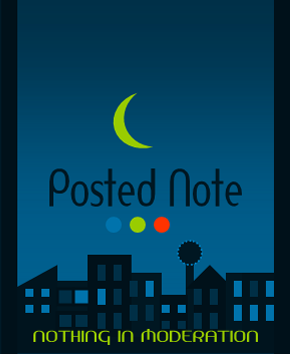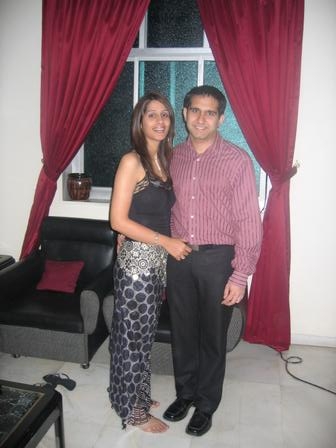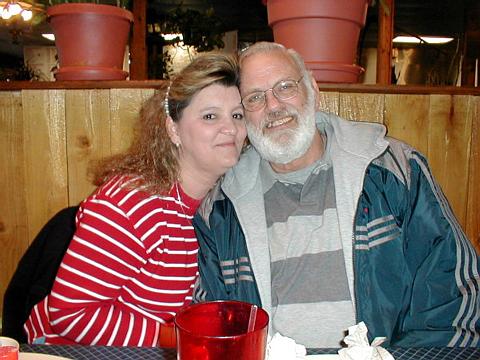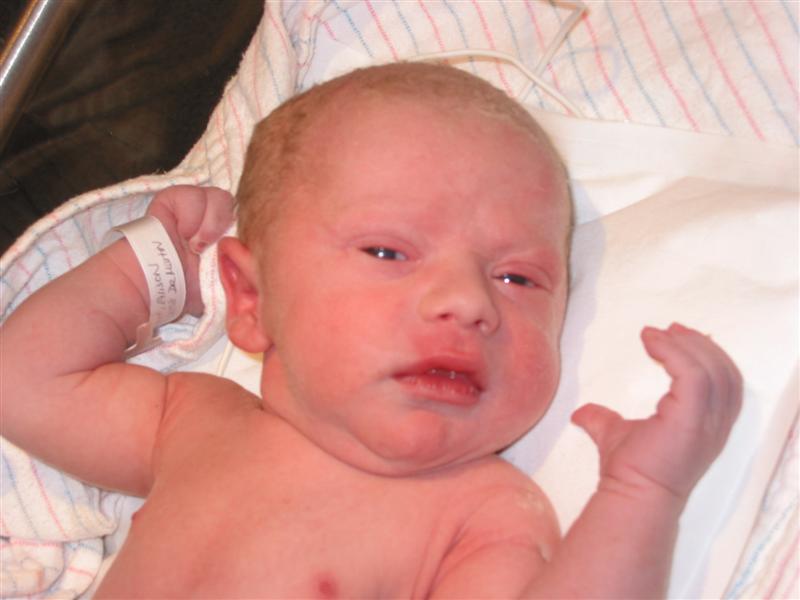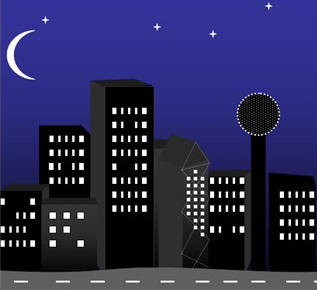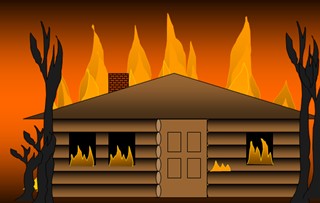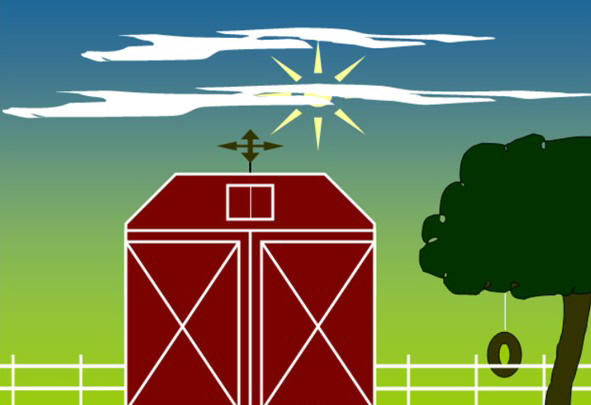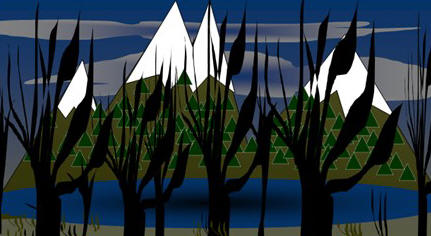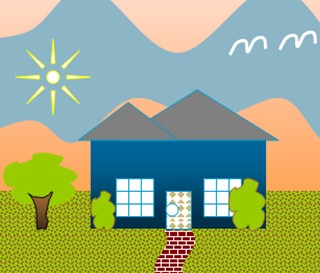The Elevated Brownie... and other Delicious Dishes."When baking, follow directions. When cooking, go by your own taste."
— Laiko BahrsWell, this isn't as quippy as I had hoped. When baking there is no way to do a "quippy" monologue, perhaps the word ""quippy" will apply when I post a monlogue about the pros of cooking with pasta for large parties. Until then, if you have 30 minutes to kill- read on!
At high altitudes, the air density is lower than at sea level. This causes two basic problems:
1. At higher elevations, water boils at a LOWER temperature, thus requiring you to cook longer once you hit boiling (and the time it takes you to prepare your recipe). For example, the water's not as hot in Denver as it is in Texas, even boiling. This is the reason when cooking in the mountains your coffee and hot chocolate can be merely tepid, even though the water was boiling.
2. Baked goods tend to rise faster requiring a change in the proportion of ingredients used in leavened foods (such as breads and cakes). You may need to adjust the baking temperature in your oven as well.
You can pretty much just follow the directions on the box for higher altitude baking and you shouldn't have a problem. One of my favorite recipes is as follows with the altitude adjustments already made.
Rocky Mountain Brownies8 unsweetened chocolate squares
1 1/2 cups butter
6 eggs (beaten)
3 cups sugar
1 1/2 cups all-purpose flour
1 tablespoon vanilla
1 cup walnuts (chopped)
2 cups miniature marshmallows
2 8"x 8" pans
1. Melt chocolate and butter or margarine over hot water or in a microwave on Medium 4 minutes; cool.
2. Beat eggs until lemon colored.
3. Gradually add sugar, beating until thick, about 3 minutes.
4. Stir in chocolate mixture.
5. Fold in flour, vanilla and nuts.
6. Pour into 2, well greased and floured 8" square pans.
7. Arrange marshmallows over the top.
8. Bake at 350 degrees for 35-40 minutes.
9. Do not overbake.
10. These should be very moist in the center.
11. Freezes well.
12. For one pan, cut recipe in half.
For something more complex and a more adult palate you might try...
Souffle Au ChocolatThis is not a "typical" souffle in that it doesn't begin with a roux (a cooked butter-and-flour) base, but I find it more chocolatey than souffles made with a roux. Serve this with a
creme anglaise (recipe below) and decorate with raspberries and apricots.
To help ensure the success of your souffle, make certain there's nary a speck of egg yolk in your whites, and beat the whites in a large, clean, absolutely grease-free, non-plastic bowl. The whites and sugar should be beaten to soft-peak stage only; do not overbeat them. And make certain the chocolate-yolk mixture is cooled to room temperature before you fold in the beaten whites; if it is at all warm, it will deflate the whites. Hot souffles such as this one must be served immediately, as the air goes out of them very quickly once they're removed from the oven. Because this is made with bittersweet chocolate, it would probably be more appreciated by adults than by children.
4 eggs, graded "large", plus 3 egg whites (from eggs graded "large")
2 tsp. instant espresso powder
2 Tbsp. warm water
5 ounces good-quality bittersweet chocolate, chopped
3 Tbsp. unsalted butter, cut into pats
Pinch salt
1/4 cup orange juice, strained so it's free of pulp (preferably fresh-squeezed), warmed slightly
1/4 tsp. cream of tartar
3/4 cup granulated sugar
For Serving:
Lightly sweetened whipped cream
Fresh raspberries, if desired
Separate the eggs first, when they are just out of the refrigerator.
Place the 4 yolks in a large bowl; place the 7 whites in a separate, perfectly-clean, non-plastic large bowl (or the large bowl of an electric mixer).
Lightly cover the bowl of egg whites; if possible, place in a spot slightly warmer than room temperature. The whites should be at room temperature or slightly above it when beaten, as they'll yield a much greater volume that way.
In a small cup, dissolve espresso powder in warm water; set aside. In small heatproof bowl, combine chopped chocolate, butter, and salt. Place over simmering water on low heat (water should not touch bottom of bowl). Stir frequently until almost melted. Remove from heat and hot water; stir until melted and smooth. Stir in dissolved espresso. Cool until slightly warm.
Whisk yolks lightly just to mix. Whisk in slightly warm chocolate mixture, then gradually whisk in warmed orange juice (if the orange juice is cold when added, it may cause the chocolate to harden too much). Set aside to cool to room temperature, whisking occasionally. Mixture will thicken as it cools.
Meanwhile, adjust rack to center of oven. Butter a 1-1/2 quart souffle dish (mine is white porcelain; use a light-colored dish for this dark souffle). Sugar the dish by placing a couple of tablespoons of sugar inside it (this sugar is in addition to that called for in the recipe), then tilting the dish until all the buttered surfaces are covered with sugar. Pour out any extra sugar. Set prepared dish aside. Have ready the cream of tartar and the 3/4 cup granulated sugar.
When the chocolate-yolk mixture has cooled to room temperature and the egg whites are at least at room temperature, you're ready to proceed. Preheat the oven to 425 degrees F.
Whisk the chocolate-yolk mixture well to loosen it.
Add cream of tartar to egg whites. With whisk beater of stand electric mixer or sturdy hand-held electric mixer, begin to beat the whites at low speed. Gradually increase speed to high. when whites are very foamy and increased in volume, begin adding sugar, about one tablespoon at a time. Continue beating until all sugar is added and meringue stands in soft peaks. Do not overbeat.
Add a large spoonful of meringue to the cooled chocolate-yolk mixture and whisk it in thoroughly to lighten. Working quickly, add the remaining meringue in three additions. Use a large rubber spatula to fold in each addition and scrape the bowl bottom and sides. Don't fold in the first two additions too thoroughly, and fold in the last addition just until no white streaks show. Quickly turn the souffle into the prepared dish (the dish will be filled to within an inch or so of the top). Spread the souffle level and place it in the preheated oven.
Close oven door; IMMEDIATELY REDUCE TEMPERATURE TO 375 DEGREES F.
Bake the souffle 40 to 42 minutes. When it is done, it will have risen a bit above the edges of the dish, and the center will barely quiver (if at all) when the dish is lightly tapped. When baked for the lesser amount of time, the very center of the souffle will remain slightly "saucy". Remove from oven.
Serve IMMEDIATELY, using a large spoon to portion out the souffle. Accompany as desired, but I prefer a rich Starbucks Christmas Blend coffee or cafe au lait- whichever you prefer.
Thin Creme Anglaise Sauce:2 cups (480 ml) light cream or half and half
1 vanilla bean, split lengthwise (can be found specialty food stores) or 2 teaspoons pure vanilla extract
1/3 cup (66 grams) granulated white sugar
5 large egg yolks
Makes about 2 cups (480 ml)
Thick Creme Anglaise Sauce:1 cup (240 ml) light cream or half and half
1/2 vanilla bean, split lengthwise (can be found specialty food stores).
1/4 cup (50 grams) granulated white sugar
4 large egg yolks
Makes about 1 cup (240 ml).
Optional:
These ingredients are added after the sauce has been cooked.
1 tablespoons liqueur (Grand Marnier or Kirsch)
1/4 cup Raspberry Purée
2 ounces (55 grams) semi-sweet or bittersweet chocolate, melted
I am working on a new masthead to accompany the New Year and I'll have the new photos posted soon!
